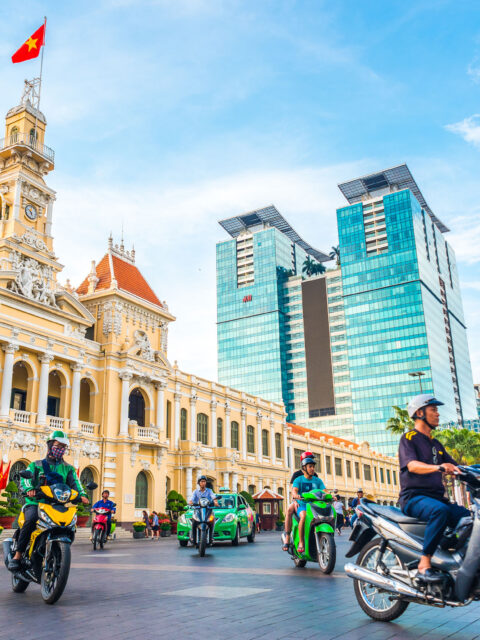In the lush landscapes of Vietnam, a tropical paradise awaits fruit enthusiasts with a cornucopia of flavors and textures. From the bustling markets of Hanoi to the Mekong Delta’s fertile fields, Vietnamese fruits offer a tantalizing journey for the taste buds. In this article, we’ll set sail on a delightful exploration of the top 17 Vietnamese fruit picks, each one a unique blend of sweetness, fragrance, and cultural significance. This guide will unveil the diverse array of fruits that contribute to Vietnam’s reputation as a haven for fruit connoisseurs.
As we delve into this vibrant tapestry of flavors, we’ll not only savor the succulence of each fruit but also delve into the rich cultural stories and culinary traditions surrounding them. Vietnam’s tropical climate and fertile soil provide an ideal breeding ground for an astonishing variety of fruits, each with its own distinct season and significance. This journey through the top 17 Vietnamese fruits promises a sensory adventure that captures the essence of this beautiful country.
Explore the top Vietnamese street food experiences with our guide!
Top 17 Fruits In Vietnam
Overall, Vietnam is a country with a rich and diverse fruit culture. The country’s climate is perfect for growing a wide variety of tropical fruits, which play an important role in Vietnamese cuisine and culture. Now, let’s discover the top fruits in Vietnam together.
Dragon Fruit (Thanh Long)
Dragon fruit is native to Central and South America, but it is now grown in many tropical and subtropical regions around the world, including Vietnam.
Dragon fruit has a unique appearance, with its bright pink or red skin and spiky green scales. The fruit is oval-shaped and can grow up to 12 inches long and 6 inches wide. The flesh of dragon fruit is white or purple, and it is dotted with small black seeds.
Taste and texture: Dragon fruit has a sweet, slightly tart flavor. It is often compared to the flavor of kiwis or pears. The flesh of dragon fruit is crunchy and juicy.
Where and when to find it in Vietnam: The dragon fruit farm is suitable for growing in hot areas with high light intensity. Moreover, trees grow on many different soil types such as gray soil, alum soil, and red soil. The dragon fruit farm is cultivated in a lot of places, for example, Long An, Binh Thuan, Long Khanh, and so on. Vietnam Dragon fruit can grow very well in Vietnam with a high yield and beautiful fruit shape; flowering time is from April to September, time from fruiting to harvest is 28-35 days.

Mango (Xoài)
Mangoes are popular tropical fruits. Mangoes are native to India and Bangladesh, but they are now grown in many tropical and subtropical regions around the world, including Vietnam. Mangoes are an oval-shaped fruit with green, yellow, or red skin when ripe.
Taste and texture: Mangoes have a sweet, juicy flavor. The flesh of mangoes is soft and fleshy. Mangoes also have a slightly tart flavor, which is more pronounced in unripe mangoes. They are eaten fresh, dried, or used in a variety of dishes, such as mango sticky rice, mango smoothies, and savoury green mango salad.
Where and when to find it in Vietnam: These tropical fruits are grown throughout Vietnam and can be found year-round. However, the best mangoes are said to come from the southern provinces, such as Đồng Tháp and Tiền Giang. In the southern parts mangoes are harvested in March-April and in the northern parts, the fruiting season lasts from May to September.

Rambutan (Chôm Chôm)
Rambutans are tropical fruits that are native to Southeast Asia. They are known for their unique appearance, with their bright red skin, spiky green hairs, and white, translucent flesh.
Taste and texture: Rambutans have a sweet, slightly tart flavor. The flesh of rambutans is juicy and slightly crunchy. The flavor of rambutans is often compared to a mix of lychee and grape.
Where and when to find it in Vietnam: These sweet tropical fruits are grown throughout Vietnam and are available from May to August. They are especially popular in the Mekong Delta region.
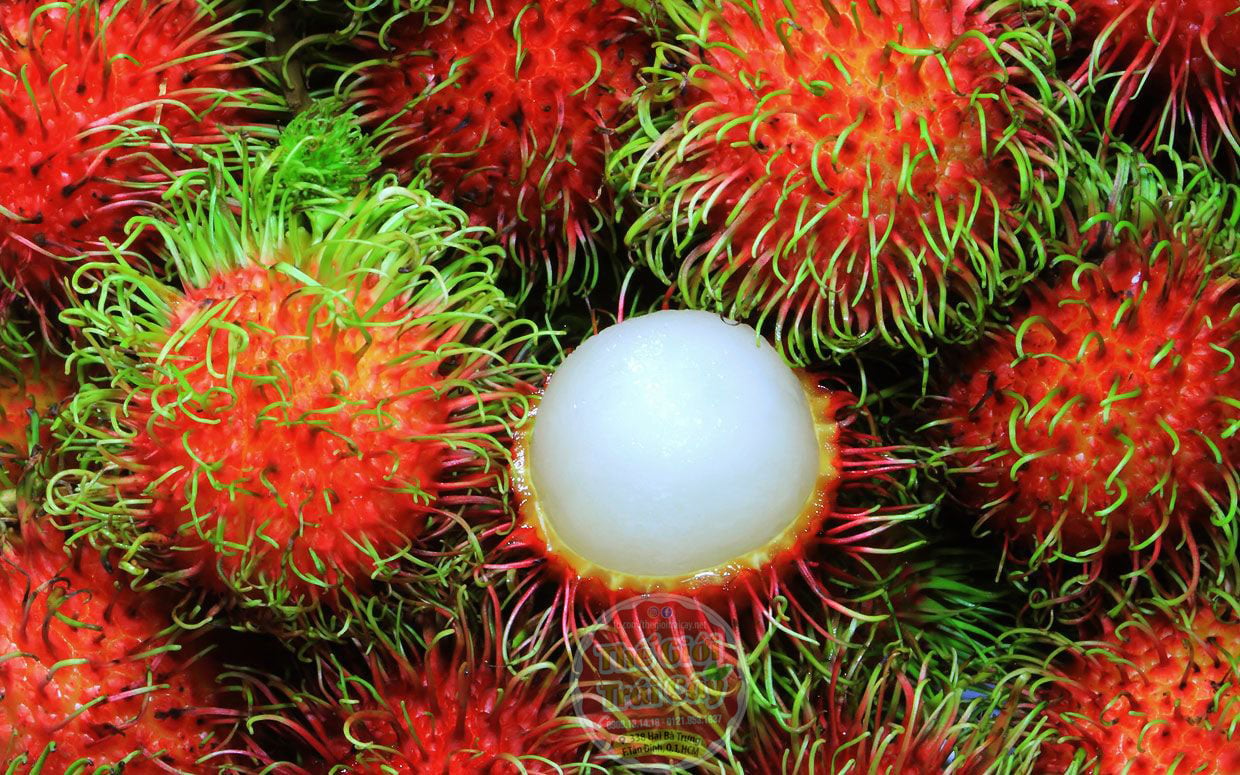
Lychee (Vải)
Lychees are native to southern China and northern Vietnam, but they are now grown in many tropical and subtropical regions around the world.
Lychees are small, round fruits with red, bumpy skin and white, translucent flesh. The skin of lychees is thin and easily peeled.
Taste and texture: Lychees have a sweet, tart flavor. The flesh of lychees is juicy and slightly crunchy. The flesh of lychees also has a small, brown seed that is located in the center.
Where and when to find it in Vietnam: Lychees are grown in northern Vietnam and are available from May to July. They are especially popular in the province of Luc Ngan, which is known as the “lychee capital of Vietnam.”
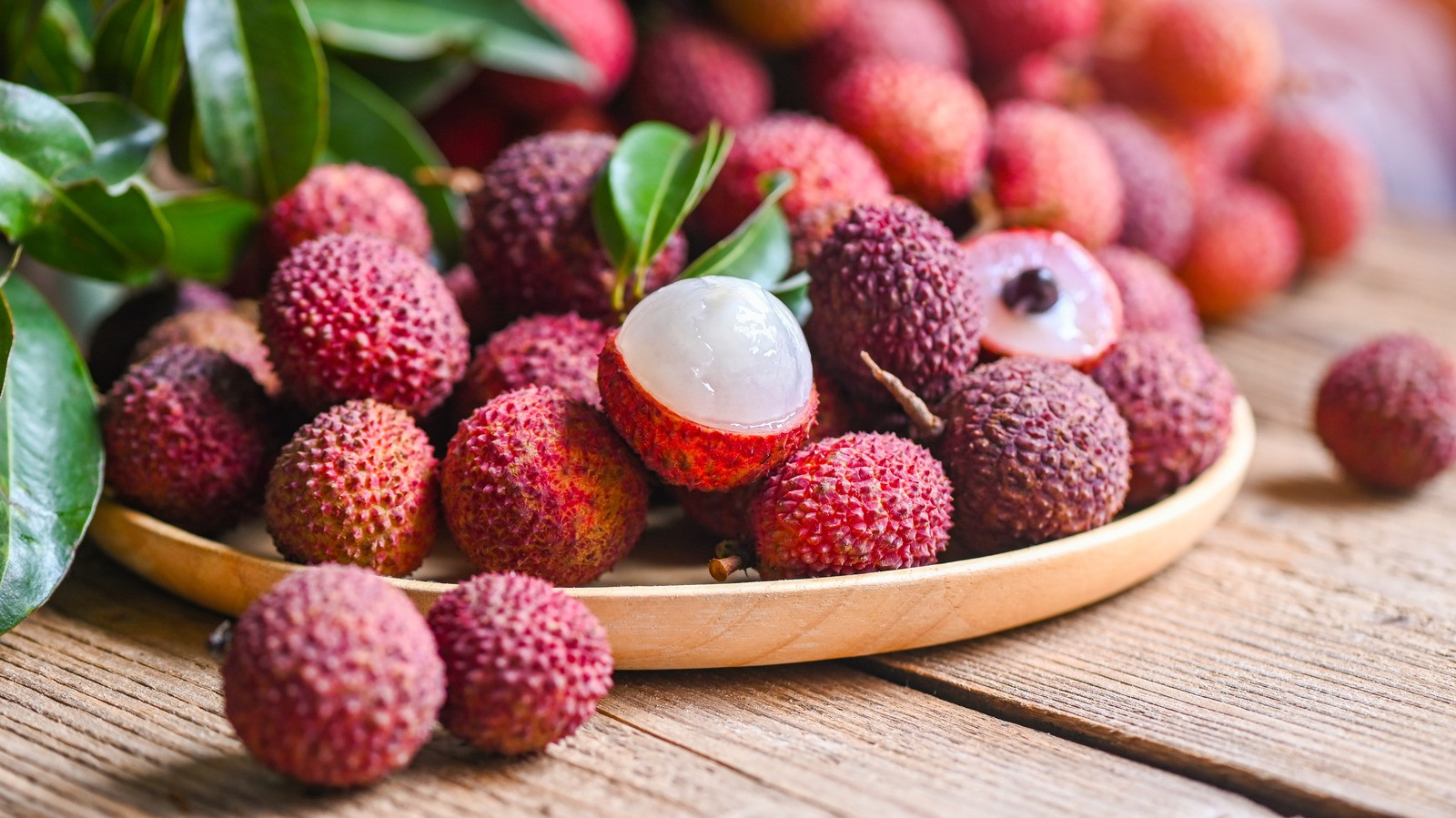
Longan (Nhãn)
Longans are small, round Vietnamese fruits with brown, brittle skin and translucent flesh. The skin of longans is thin and easily peeled.
Taste and texture: The flesh of longans is juicy and slightly crunchy. The flesh of longans also has a small, black seed that is located in the center.
Where and when to find it in Vietnam: Longans are grown in northern Vietnam and are available from June to August. They are especially popular in the province of Bac Giang, which is known as the “longan capital of Vietnam.”
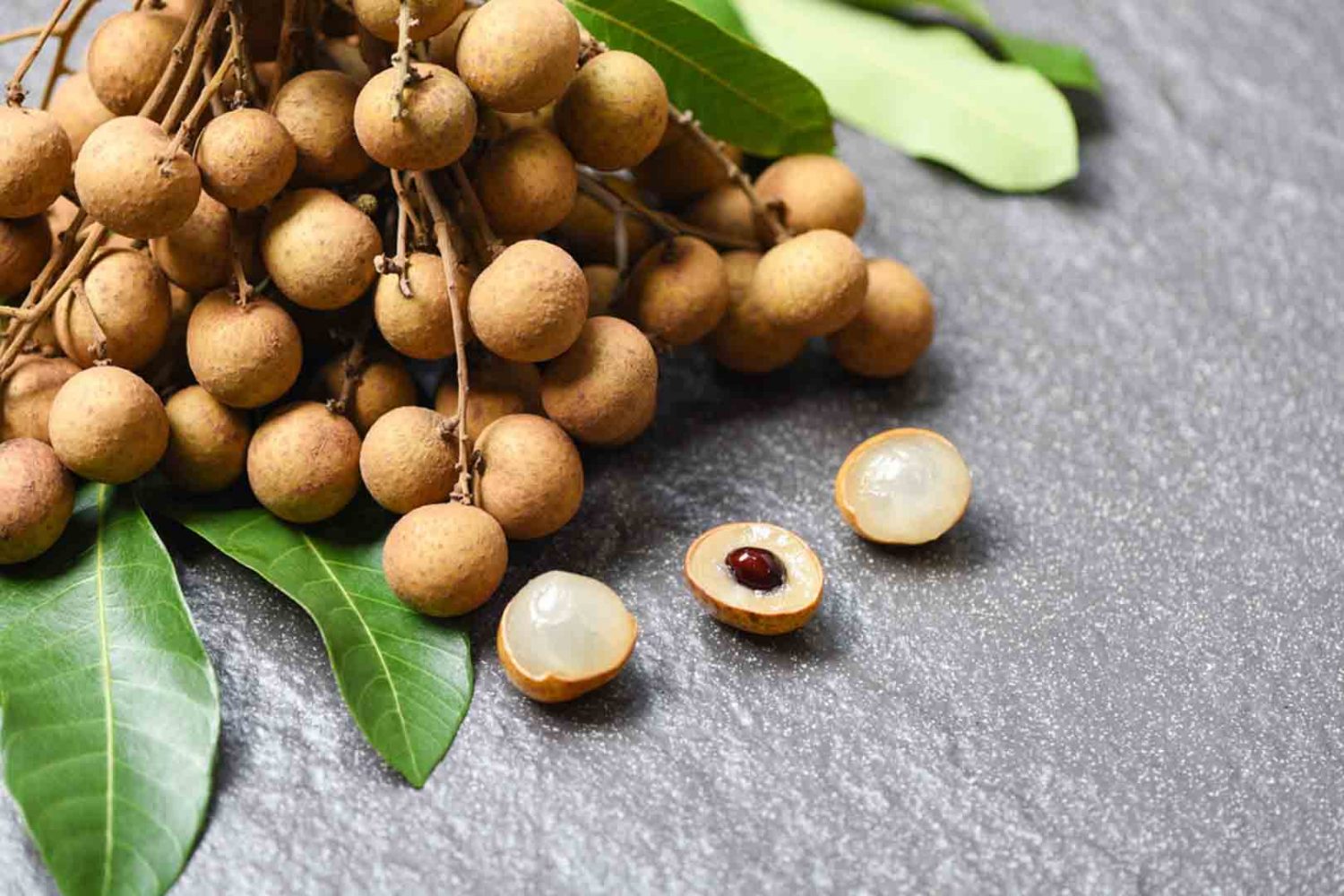
Durian (Sầu Riêng)
Durian is a popular fruit in Southeast Asia, but it is also controversial due to its strong odor. Durian is native to Borneo, but it is now grown in many tropical countries around the world, including Vietnam.
Durian is a large, oval-shaped fruit with a thick, spiky husk. The husk of durian is green when unripe and turns yellow or brown when ripe.
Taste and texture: Durian has a strong, unique flavor that is often described as being a mix of sweet, savory, and nutty. The flesh of durian is yellow or orange and has a creamy, custard-like texture. The flesh of durian also has a number of large seeds.
Where and when to find it in Vietnam: Durian can be purchased anywhere in Vietnam, but it only grows south of Hue. Surprisingly, the humid flat lands of the Mekong Delta are a major production area. Here’s a list of the major growing areas where durian can be easily found: Dak Lak, Dak Nong, Ben Tre, Bin Thuan, Tra Vinh, Dong Nai, and Lam Dong. Durian is available from May to September.
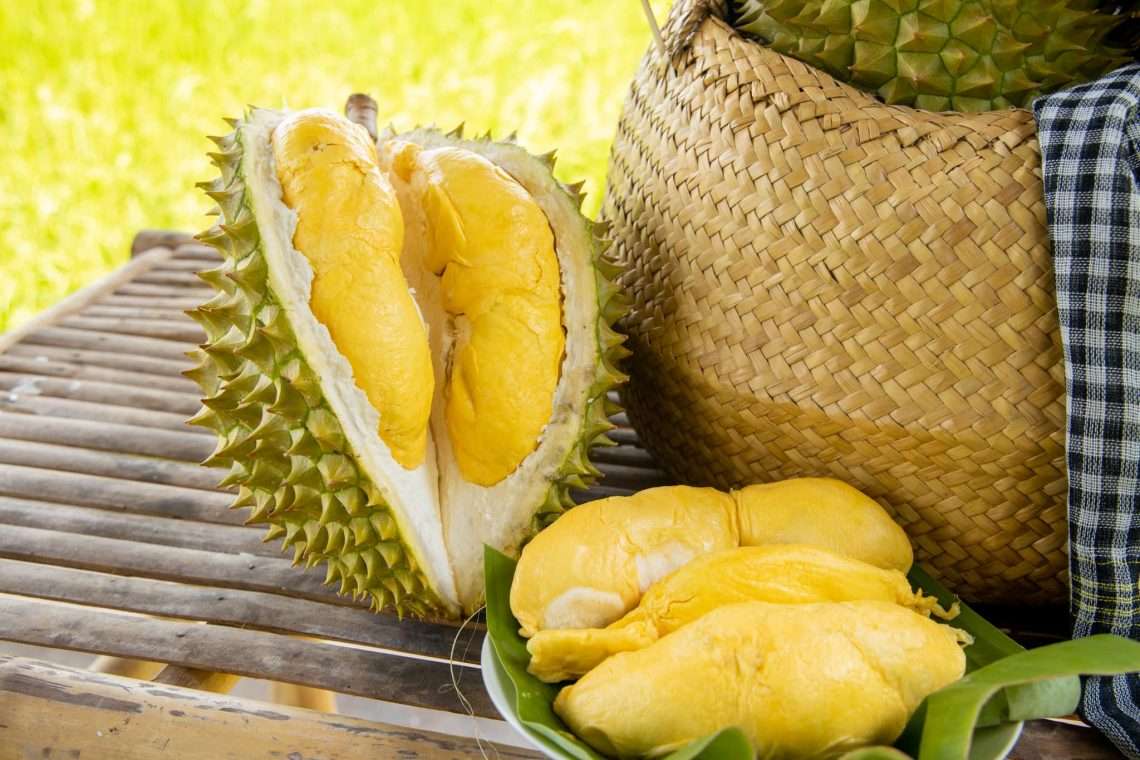
Mangosteen (Măng Cụt)
Mangosteens are familiar tropical fruits in Southeast Asia countries. It is also popular in Vietnam with its delicious taste and packed vitamins. It is a small, round fruit with purple skin and white flesh. The skin of mangosteen is thick and tough, but it is easy to peel.
Taste and texture: Mangosteen has a sweet, slightly tangy flavor. The flesh of mangosteen is juicy and soft. The flavor of mangosteen is often compared to a mix of peach and strawberry. The flesh of mangosteen also has a number of small seeds.
Where and when to find it in Vietnam: Speaking of mangosteen, Vietnamese people always call for three famous regions: Bao Loc – Lam Dong, Cai Mon – Ben Tre, and Lai Thieu – Binh Duong. The mangosteen season in Vietnam lasts from around May to August.

Custard Apple (Mãng Cầu)
Custard apples are exotic fruits in Vietnam, which are native to Central and South America. The custard apple is a small, round fruit with green or yellow skin and white flesh. The skin of custard apples is thin and easily peeled.
Taste and texture: Custard apple has a sweet, custard-like flavor. The flesh of custard apples is creamy and smooth.
Where and when to find it in Vietnam: These Vietnamese fruits are abundant during the months of July, but not all ripen at the same time. The firm varieties are densely grown in the south, mainly in Ninh Thuan and Ba Ria areas.

Papaya (Đu Đủ)
Papaya is also one of the most exotic fruits in Vietnam, as it is native to Mexico, and Central and South America. Papaya is a big, cylinder-shaped fruit and has a green color when not ripened. The fruit can be eaten fresh when it becomes as soft as an avocado. The skin by then turns to a variety of orange, covering the inside with reddish flesh and numerous small black seeds.
Papaya plays a vital role in Southern Vietnam’s life. With the pronunciation close to the word sufficient, this fruit is displayed during the Tet holiday, hoping for a better and happy upcoming year.
Taste and texture: Papaya has a sweet, slightly tangy flavor. The flesh of papaya is juicy and soft. Ripe papaya is often eaten raw after peeling off the coat and removing all the black seeds.
You should not eat the papaya seeds due to their countable amount of poison, which will disturb your pulse and nerve system. Papayas are popular desserts in Viet Nam.
The “gỏi đu đủ bò khô” is also a known salad-like dish in the country using green papaya and shredded beef jerky eaten with a special hot sauce
Where and when to find it in Vietnam: Papaya is grown mostly in the Southern part of Vietnam, Soc Trang, Vinh Long, Dong Thap, and other Westside cities. It is grown all year round, but the most delicious and sweet papaya is on the market around the Tet holiday, from about January to February.
Guava (Ổi)
Guava is native to Brazil, originating from the tropical region of Central America, guava gradually became more familiar in Asia in the 17th century thanks to its good taste and lots of benefits for health.
Guava is a small, round fruit with green, yellow, or red skin and white or pink flesh. The skin of guava is thin and easily peeled. Guava also has a number of small, black seeds.
Taste and texture: Guava has a sweet, slightly tart flavor. The flesh of guava is juicy and firm. Vietnamese has some unique ways to make guava tastier. You may try to eat guava with ground chili salt.
Where and when to find it in Vietnam: Guava is grown throughout Vietnam and is available year-round. You can find Oi Xa li nghe mostly in the Mekong Delta areas, Oi Bo in Thai Binh or Hai Duong, Oi Gang guava in Gia Lam, Hanoi. Besides, many other places like Bac Giang, Hung Yen, and Lai Chau also increasingly plant this kind of fruit for use and selling in a small volume.
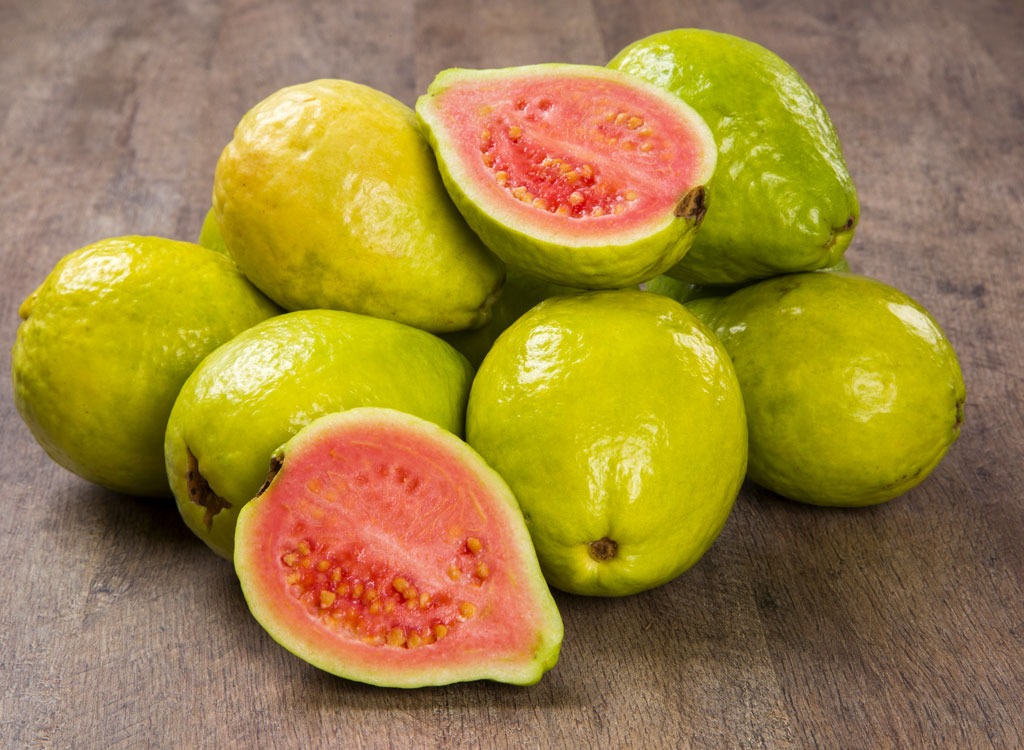
Star Fruit (Khế)
Star fruit is native to Sri Lanka, but it is well-known as being in Southeast Asia, including Vietnam. Starfruit is a small, star-shaped fruit with yellow or green skin and white flesh. The skin of starfruit is thin and easily peeled.
Taste and texture: The flesh of the starfruit is segmented, crunchy, and juicy. It has a sour and slightly sweet flavor and is often eaten fresh or added to salads. The fruit has a distinct taste and is often used in cooking. When sliced crosswise, the pieces look like five distinct-angled stars.
Where and when to find it in Vietnam: Its season can be unpredictable as the trees bloom twice a year. The good news is, that you can usually eat this tangy delicacy year-round, although you’ll have better luck finding it in the Mekong Delta.
Sapodilla (Hồng Xiêm)
Sapodilla is a small, oval-shaped fruit with brown skin and yellow or orange flesh. Sapodilla is native to Mexico, Central America, and Caribe, but it is now grown in many tropical and subtropical regions around the world, such as Thailand, the Philippines, and Vietnam.
Sapodilla is a small, oval-shaped fruit with brown skin and yellow or orange flesh. The skin of sapodilla is thin and slightly fuzzy.
Taste and texture: It has a sweet, molasses-like flavor and is often eaten fresh or made into desserts. The flesh of sapodilla is soft and creamy.
Where and when to find it in Vietnam: Sapodilla offers fruit every month of the year, and the place that has the best one is Xuan Dinh, Tu Liem District, Hanoi.

Pineapple (Dứa)
Pineapples are popular tropical fruits in many tropical and subtropical regions around the world, including Vietnam. Loaded with lots of vitamin C and antioxidant compounds, eating pineapple will help protect the skin, reduce inflammation symptoms, relieve joint and bone pain, and reduce stress.
In Vietnam, pineapple has many different names. Northern people call pineapple “dứa,” while people in the Central and in the South give it the name “khóm” or “thơm.” Do not mistake it with other fruits, “dưa” and “dừa,” as the spellings are almost the same, but they are three different Vietnamese fruits.
The pineapple is a large, long fruit with a thick, spiky husk. The husk of pineapple is green when unripe and turns yellow or brown when ripe.
Taste and texture: Pineapple has a sweet and tangy flavor. The flesh of the pineapple is juicy and crunchy. Pineapple is often eaten raw or stored in cans or glass containers as chunks to consume later. Other than being a dessert fruit, pineapple juice is also a refreshing drink to take after meals.
Where and when to find it in Vietnam: In the North, commercial pineapple is planted mostly in Ninh Binh, Ha Nam, and Phu Tho. The peak harvest time usually falls from May to June. Kien Giang, Tien Giang, Long An, and Hau Giang are provinces in the Mekong River Delta that grow a large amount of delicious and nutritious Vietnamese fruits in the South. The Queen pineapple is very nurtured and flourishes here thanks to the fertile acid soil and good climate. Starting from April and ending after June in the Lunar calendar, farmers use boats to get to every row in the pineapple farm.
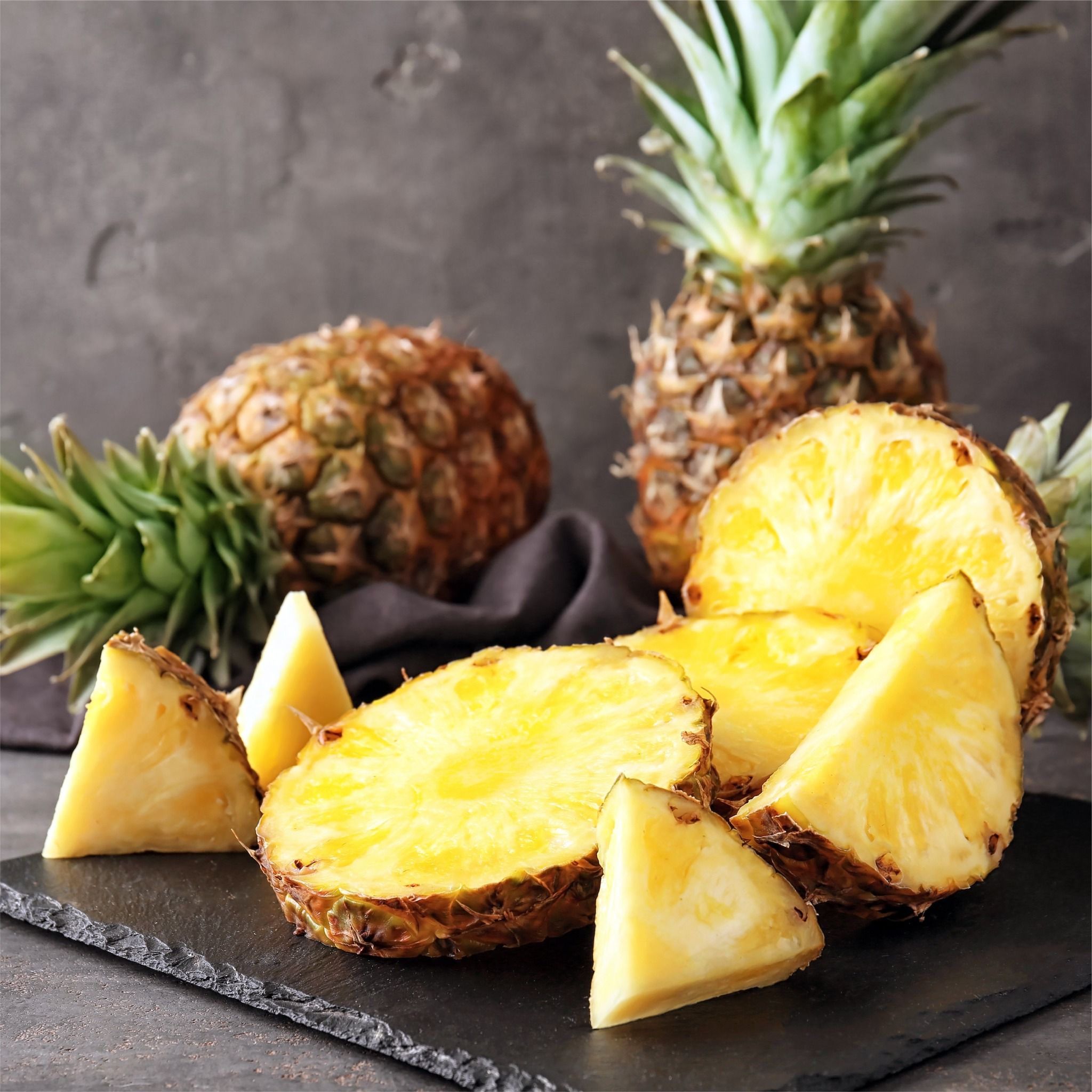
Passion Fruit (Chanh Dây)
Passion fruit is native to Brazil, Paraguay, Argentina in South America, but it is now grown in many tropical regions around the world, including Vietnam. Passion fruit is a small, round fruit with a hard, bumpy skin. The skin of passion fruit is usually yellow or purple. Passion fruit also has a number of small, black seeds.
Taste and texture: Passion fruit has a sour and tangy flavor. The flesh of this delicious fruit is juicy and slightly acidic. Passion Fruit Juice is so easy to make at home! All you need is passion fruit puree, which is also known as pulp, water, and your sweetener of choice to make this refreshing tropical drink.
Where and when to find it in Vietnam: This tropical fruit is grown throughout Vietnam and is usually harvested from September to December.

Banana (Chuối)
Banana is native to Southeast Asia. Banana is a long, curved fruit with yellow skin, sweet and soft meat. The skin of the banana is thin and easily peeled.
Taste and texture: Banana has a sweet flavor. The flesh of bananas is soft and smooth. Bananas in Vietnam are the main component of several popular dishes.
In bananas there exist a lot of nutrients supplying energy for the body. Therefore, they are highly preferred. From bananas, Vietnamese people can process many delicious sweet foods such as steamed banana cake, fried banana cake, and banana ice cream.
Where and when to find it in Vietnam: Bananas are easily found year-round because of their easy-to-grow and adaptable properties in many environments. For Chuoi Cau, farmers often buy these banana varieties from the lowland areas to multiply, transplant, and grow in their Ha Nam garden land. Its brother – Chuoi Ngu, is also planted in the same areas. In fact, Ha Nam province is believed to be the largest source of Chuoi Ngu distribution in Vietnam. On the other hand, Chuoi Tieu is compatible with places that are humid and have regular rainfall during the year. Thus, the Red River Delta is a suitable place to grow this pepper banana variety.
Coconut (Dừa)
Coconut is a large, brown fruit with a hard shell and white flesh. It has a sweet taste and is a popular fruit in many tropical and subtropical regions around the world, including Vietnam. Coconut is a large, oval-shaped fruit with a hard, brown husk. The husk of coconut is thick and tough. Coconut also has a clear liquid inside called coconut water.
Taste and texture: Coconut has a sweet and creamy flavor. The flesh of the coconut is soft and slightly fibrous. Coconut water has a refreshing and slightly sweet taste. Coconut water is nutritious water and helps people quench their thirst. It is a very popular drink on hot days in summer.
Where and when to find it in Vietnam: Coconut is grown throughout Vietnam and is available year-round. However, Ben Tre is known as the land of coconuts or the land of three green coconut islands. Coconut trees, one of the perennial industrial trees, can be seen among the crops grown on the land in Ben Tre leading in terms of arable land in the country.
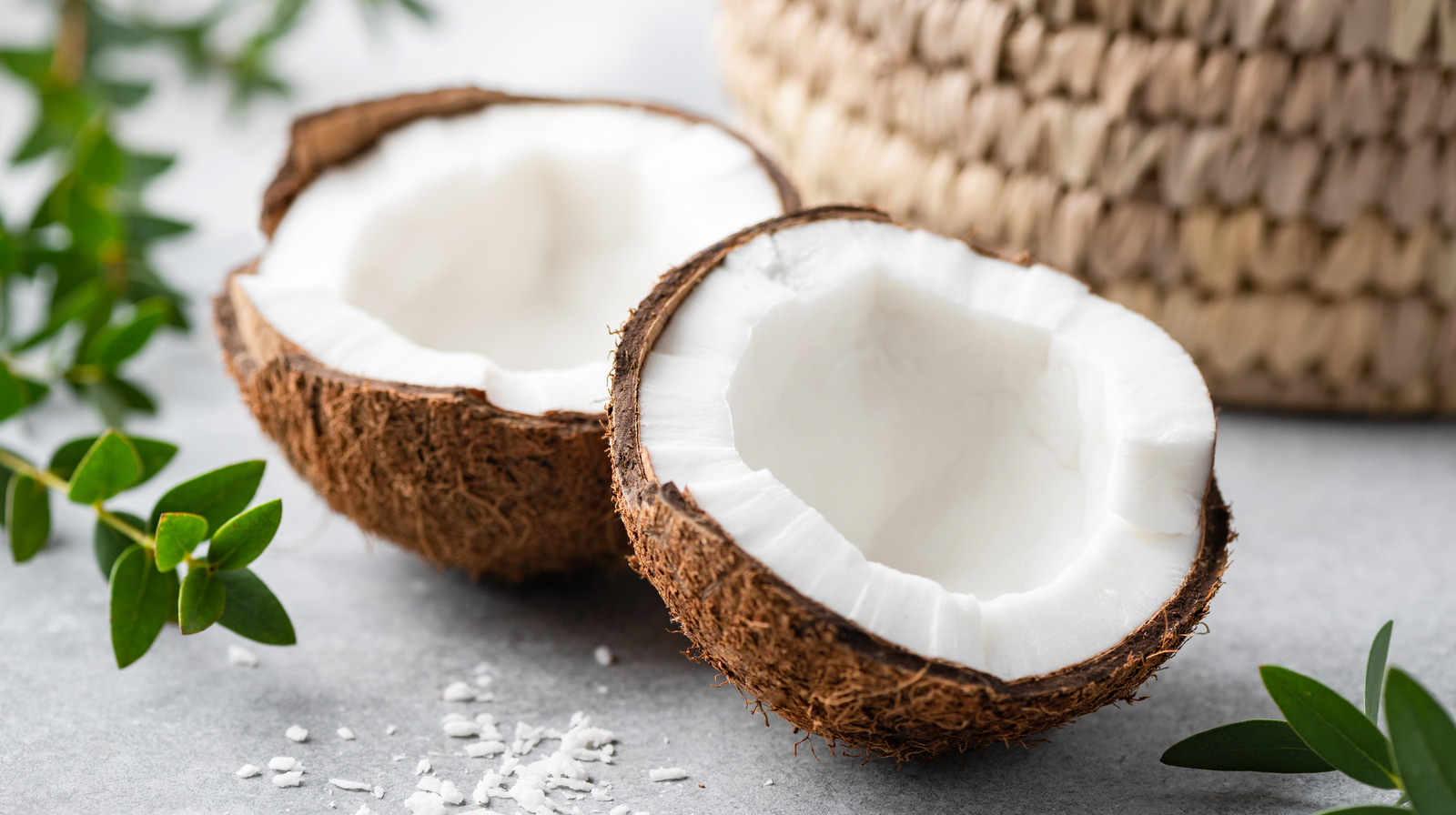
Pomelo (Bưởi)
Pomelo (or Chinese grapefruit) is a member of the citrus family and is native to Southeast Asia. The largest known citrus fruit appears like a big grapefruit but has a sweeter taste to it and is much less bitter. Pomelo is a large, round fruit with thick, green, or yellow skin. The skin of pomelo is thick. Pomelo also has a number of large, white seeds.
Taste and texture: Pomelo has a sweet and sour taste. The flesh of pomelo is soft and juicy.
Where and when to find it in Vietnam: The major harvest season takes place from late September to late November. There are several tasty varieties of pomelo in Vietnam, often named after the location where it grows. In the North, there is the Doan Hung pomelo (which grows in Phu Tho Province), in the Central there is the Phuc Trach pomelo (from Ha Tinh Province), and in the South, there is the Tan Trieu pomelo (Bien Hoa Province). Each variety has unique qualities. The Phuc Trach pomelo has a distinctly sweet flavor of glucose that is fresh to the taste and known to quench the thirst and leave the body cool and the mind relaxed. Another variety, the Thanh Tra pomelo, is mildly sweet and somewhat acidic at the same time while the Buoi Duong (or sugar pomelo) is much sweeter.
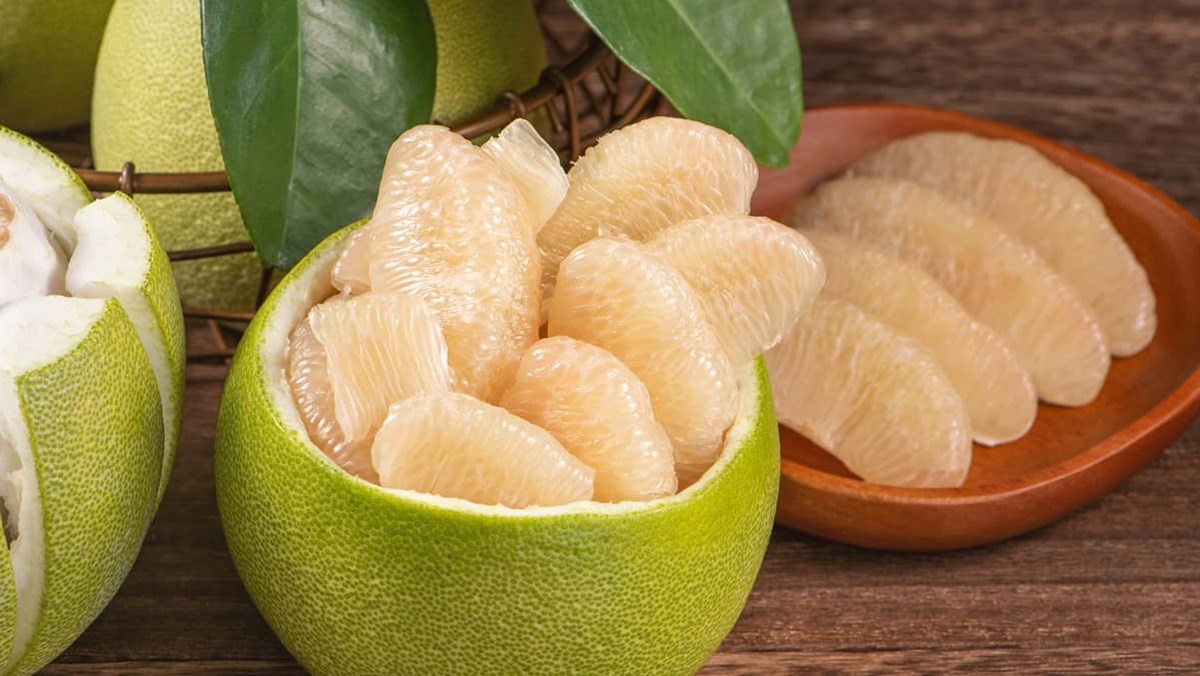
Ready To Try All Of These Delicious Vietnamese Fruit Picks?
In conclusion, navigating the world of Vietnamese fruits is like embarking on a delightful culinary adventure. This diverse array of flavors is a testament to Vietnam’s rich agricultural landscape. Whether you’re a local looking to expand your fruit repertoire or a visitor eager to savor the tastes of this beautiful country, these top 17 picks are sure to add a burst of freshness to your palate.
So, the next time you stroll through a local market or find yourself at a street vendor’s stall, don’t hesitate to indulge in the abundance of Vietnam’s fruity treasures — each bite tells a story of the land, the people, and the culture. Happy tasting!
Plan your hassle-free trip to Vietnam with e-Visa!
Let our extensive 10+ years of experience in visa services be your guiding light as you book with us, guaranteeing a smooth and worry-free trip to Vietnam!









